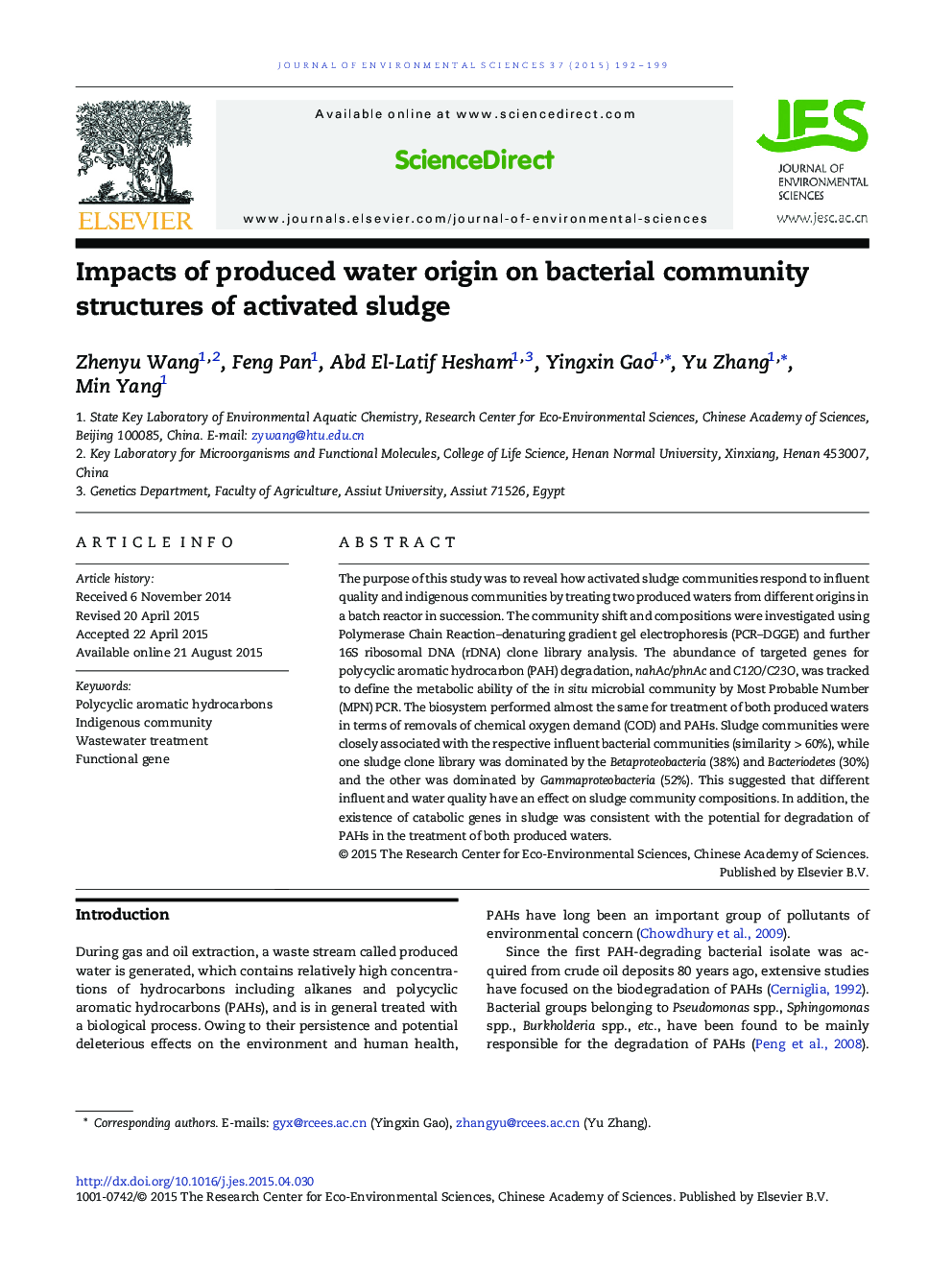| Article ID | Journal | Published Year | Pages | File Type |
|---|---|---|---|---|
| 4453918 | Journal of Environmental Sciences | 2015 | 8 Pages |
The purpose of this study was to reveal how activated sludge communities respond to influent quality and indigenous communities by treating two produced waters from different origins in a batch reactor in succession. The community shift and compositions were investigated using Polymerase Chain Reaction–denaturing gradient gel electrophoresis (PCR–DGGE) and further 16S ribosomal DNA (rDNA) clone library analysis. The abundance of targeted genes for polycyclic aromatic hydrocarbon (PAH) degradation, nahAc/phnAc and C12O/C23O, was tracked to define the metabolic ability of the in situ microbial community by Most Probable Number (MPN) PCR. The biosystem performed almost the same for treatment of both produced waters in terms of removals of chemical oxygen demand (COD) and PAHs. Sludge communities were closely associated with the respective influent bacterial communities (similarity > 60%), while one sludge clone library was dominated by the Betaproteobacteria (38%) and Bacteriodetes (30%) and the other was dominated by Gammaproteobacteria (52%). This suggested that different influent and water quality have an effect on sludge community compositions. In addition, the existence of catabolic genes in sludge was consistent with the potential for degradation of PAHs in the treatment of both produced waters.
Graphical abstractSystem performance is associated with abundance of catabolic genes by different community composition sourced by different influent.Figure optionsDownload full-size imageDownload as PowerPoint slide
